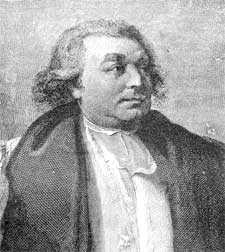Readings:
1 Samuel 8:1-22
Psalm 110:1-4
Acts 1:15-26
Matthew 9:35-38Preface of Apostles and Ordinations
PRAYER (traditional language)
We give thanks to thee, O Lord our God, for thy goodness in bestowing upon this church the gift of the episcopate; and we pray that, joined together in unity with our bishops, and nourished by thy holy sacraments, we may proclaim the Gospel of redemption with apostolic zeal; through Jesus Christ our Lord, who liveth and reigneth with thee and the Holy Spirit, one God, now and for ever. Amen.
PRAYER (contemporary language)
We give you thanks, O Lord our God, for your goodness in bestowing upon this church the gift of the episcopate; and we pray that, joined together in unity with our bishops and nourished by your holy sacraments, we may proclaim the Gospel of redemption with apostolic zeal; through Jesus Christ our Lord, who lives and reigns with you and the Holy Spirit, one God, now and for ever. Amen.
Lessons revised at General Convention 2024.
Return to Lectionary Home Page
Webmaster: Charles Wohlers
Last updated: 15 Sept. 2024
CONSECRATION OF SAMUEL SEABURY
BISHOP (14 NOV 1784)
(BESTOWAL OF THE AMERICAN EPISCOPATE)
 A
crucial date for members of the Episcopal Church in the United States
of America is the consecration of the first Bishop of the Anglican Communion
in the United States. During the colonial era, there had been no Anglican
bishops in the New World; and persons seeking to be ordained as clergy
had had to travel to England for the purpose. After the achievement of
American independence, it was important for the Church in the United States
to have its own bishops, and an assembly of Connecticut clergy chose Samuel
Seabury to go to England and there seek to be consecrated as a bishop.
A
crucial date for members of the Episcopal Church in the United States
of America is the consecration of the first Bishop of the Anglican Communion
in the United States. During the colonial era, there had been no Anglican
bishops in the New World; and persons seeking to be ordained as clergy
had had to travel to England for the purpose. After the achievement of
American independence, it was important for the Church in the United States
to have its own bishops, and an assembly of Connecticut clergy chose Samuel
Seabury to go to England and there seek to be consecrated as a bishop.
However, the English bishops were forbidden by law to consecrate anyone who would not take an oath of allegiance to the British Crown. He accordingly turned to the Episcopal Church of Scotland. When the Roman Catholic king James II was deposed in 1688, some of the Anglican clergy (including some who had been imprisoned by James for defying him on religious issues) said that, having sworn allegiance to James as King, they could not during his lifetime swear allegiance to the new monarchs William and Mary. Those who took this position were known as non-Jurors (non-swearers), and they included almost all the bishops and clergy of the Episcopal Church in Scotland. Accordingly, the monarchs and Parliament declared that thenceforth the official church in Scotland should be the Presbyterian Church. The Episcopal Church of Scotland thereafter had no recognition by the government, and for some time operated under serious legal disablities. However, since it had no connection with the government, it was free to consecrate Seabury without government permission, and it did. This is why you see a Cross of St. Andrew on the Episcopal Church flag.
In Aberdeen, 14 November 1784, Samuel Seabury was consecrated to the
Episcopate by the Bishop and the Bishop Coadjutor of Aberdeen and the
Bishop of Ross and Caithness. He thus became part of the unbroken chain
of bishops that links the Church today with the Church of the Apostles.
In return, he promised them that he would do his best
to persuade the American Church to use as its Prayer of Consecration (blessing
of the bread and wine at the Lord's Supper) the Scottish prayer, taken
largely unchanged from the 1549 Prayer Book, rather than the much shorter
one in use in England. The aforesaid prayer, adopted by the American Church
with a few modifications, has been widely regarded as one of the greatest
treasures of the Church in this country.
by James Kiefer
Note: We have Bp. Seabury's Communion Office online, which was closely based on the Scottish form.